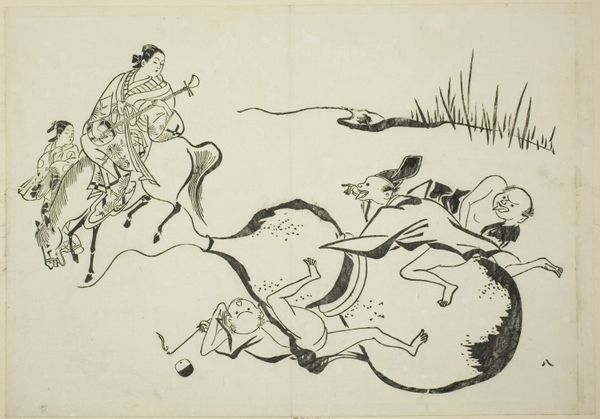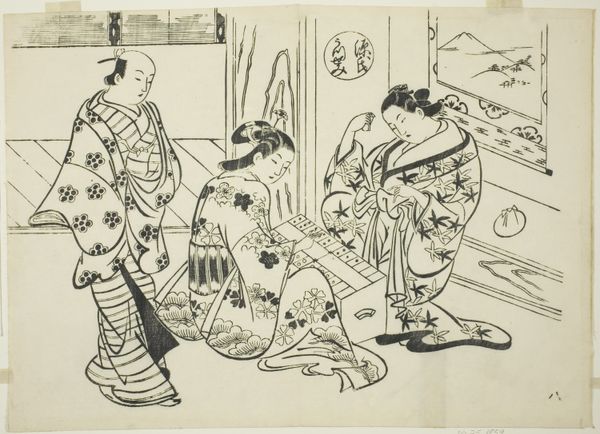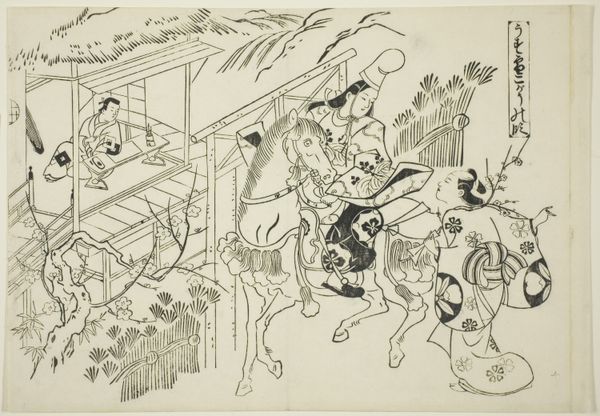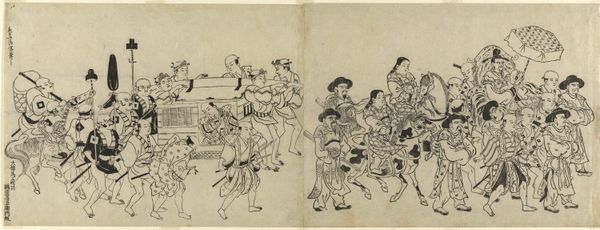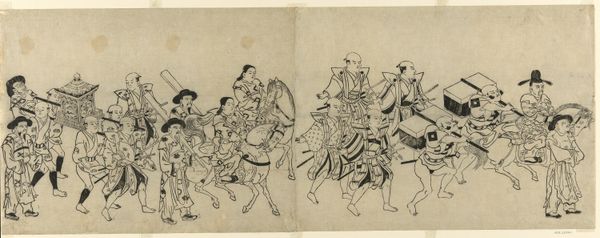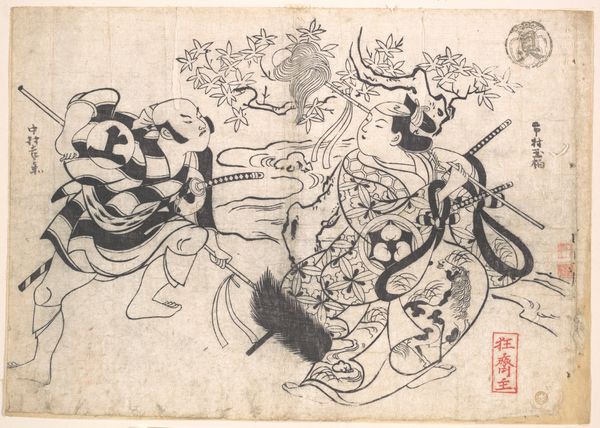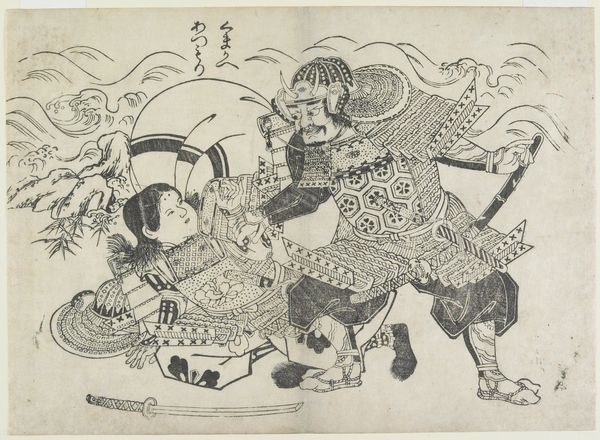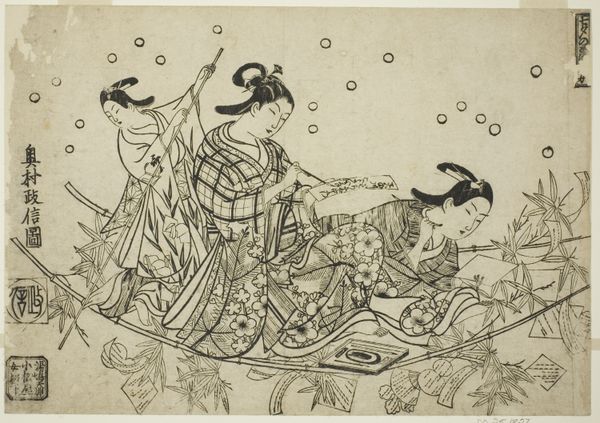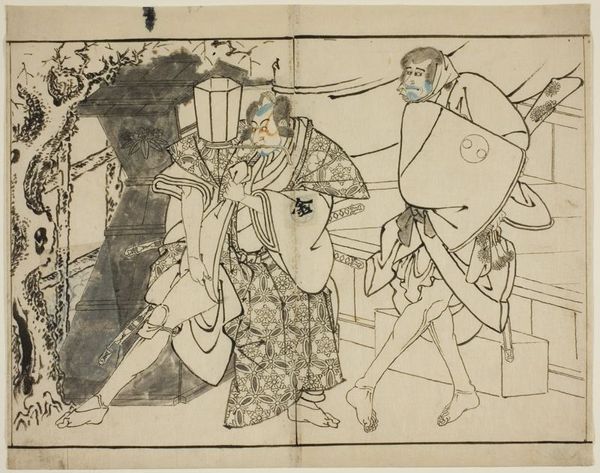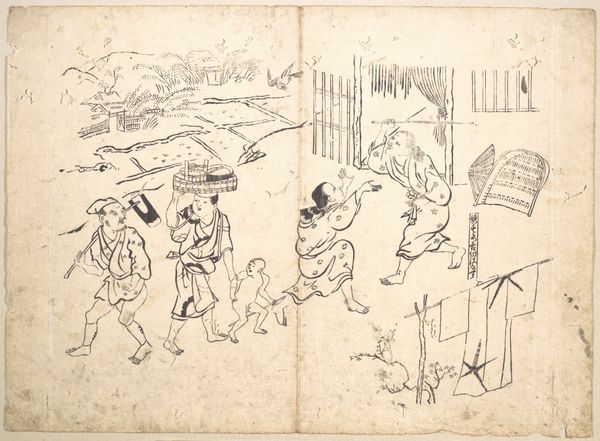
Teika's Journey (Taika no michiyuki), from the series "Famous Scenes from Japanese Puppet Plays (Yamato irotake)" c. 1705 - 1706
0:00
0:00
print, paper, woodblock-print
#
narrative-art
# print
#
asian-art
#
ukiyo-e
#
figuration
#
paper
#
woodblock-print
Dimensions: 27.3 × 39.2 cm
Copyright: Public Domain
Curator: The first thing that strikes me is the dynamism despite the seemingly simple monochrome palette. It’s a very lively scene. Editor: Indeed! What you’re looking at is titled "Teika's Journey," made by Okumura Masanobu around 1705-1706. It's a woodblock print on paper, currently held at the Art Institute of Chicago. Ukiyo-e prints like this one played a key role in disseminating images and stories to a wider audience. The choice of woodblock print here speaks to the rise of a new consumer culture, art became less about individual patronage and more about affordability and availability. Curator: The material context really underscores the intention of broader accessibility. I'm particularly interested in how the lines define form; observe the flat planes created by the line work, creating a clear and almost diagrammatic representation. It is amazing to observe that an inexpensive method such as this was applied to bring scenes from famous puppet plays to an expanding audience. Editor: Absolutely. The rise of kabuki and puppet theater influenced printmaking enormously, democratizing representation. This particular print belongs to a series showcasing scenes from Japanese puppet plays—stories that captivated the public. Mass production enabled those who never witnessed these plays, particularly lower social strata, to be exposed to the narrative content of plays and engage with the high art and theatrical productions of their society. Curator: Examining the material tells one side of the story. Let’s not overlook the significance of how this object enters public collections, the institutions such as the Art Institute plays such a powerful role in shaping canons. And what social and economic factors allow us to observe an object such as this today? Editor: Valid point! Art institutions play a central part in creating artistic merit by displaying artwork; moreover, this process creates and upholds political narratives. We cannot ignore the inherent social dynamic within such establishments. Curator: To me, examining this image—taking into account both its material history, origins in mass culture, and the socioeconomic institutions of society in both past and present day—lends greater nuance and complexity. Editor: A thought-provoking angle indeed. Thanks for this fascinating exploration.
Comments
No comments
Be the first to comment and join the conversation on the ultimate creative platform.
